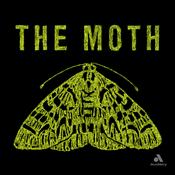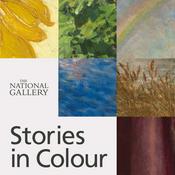676 episodes

Willem de Kooning
01/1/2026 | 16 mins.
Willem de Kooning, a Dutch-American Abstract Expressionist painter, was born in Rotterdam in 1904. He stowed away on a freighter in 1926, eventually settling in New York City. De Kooning's early work transitioned from figurative studies to abstraction, though he never fully abandoned the figure, famously stating, "Flesh was the reason oil paint was invented." He gained recognition for his black-and-white abstract paintings and married fellow artist Elaine Fried. Known for his perfectionism, he often reworked his canvases extensively. He moved to East Hampton in 1963, and despite later suffering from Alzheimer's, continued painting until the late 1980s. De Kooning died in 1997, leaving a lasting legacy as a key figure in 20th-century art. Willem de Kooning's "Woman I," created between 1950 and 1952, is a seminal work of Abstract Expressionism. This large-scale painting, now housed at the Museum of Modern Art, is the first in his "Woman" series and is renowned for its intense process and controversial imagery. De Kooning worked on the canvas for nearly two years, repeatedly painting over and scraping away layers, embodying the "action painting" style. Inspired by diverse sources, from contemporary advertisements to ancient fertility figures, "Woman I" depicts a distorted, powerful female figure with aggressive brushstrokes, vibrant yet garish colors, and a chaotic composition. The painting sparked debate upon its 1953 exhibition, with some critics viewing it as misogynistic, while others recognized its challenge to traditional notions of beauty and the female nude. "Woman I" remains an influential piece, reflecting de Kooning's struggle with representation and solidifying his reputation as a major, albeit provocative, force in post-war art. Related episodes: Jackson Pollock Janet Sobel Lee Krasner Mark Rothko Erased de Kooning Check out my other podcasts Fun Facts Daily | Art Smart | Rainbow Puppy Science Lab Who ARTed is an Airwave Media Podcast. If you are interested in advertising on this or any other Airwave Media show, email: [email protected] Learn more about your ad choices. Visit megaphone.fm/adchoices

The Erased Masterpiece - Robert Rauschenberg’s Erased de Kooning
31/12/2025 | 12 mins.
This episode is kicking off Arts Madness season. Every spring, listeners vote for their favorites in a bracketed tournament of 64 different artists. All during January and February, I will be posting daily episodes as a refresher on the artists and artworks in this year's tournament. Most of these will be encore presentations of old fan favorites, but there will still be new episodes coming into the feed as well. I am creating new episodes based on fan requests which will be coming out on Mondays. Today, I am starting things off with one of my favorites, Robert Rauschenber's Erased de Kooning. A young, up-and-coming Robert Rauschenberg knocked on the door of Willem de Kooning, one of the biggest stars of the art world in his day. Rauschenberg had a big ask. He didn't want advice or help in the traditional sense. He wanted de Kooning to give him a drawing so he could erase it. After an uncomfortable conversation, de Kooning agreed. He looked through his portfolios and picked out a drawing. It was not easy. Rauschenberg spent weeks and wore through numerous erasers on the mixed media piece. In the end he obliterated nearly every trace of de Kooning's drawing in an act that some consider to be an iconoclastic destruction of the artist's legacy and others see as an incredible tribute that completely upended the way we encounter the work moving it from the paper to the imagination. Learn more about your ad choices. Visit megaphone.fm/adchoices

The 57th Street Art Fair
29/12/2025 | 35 mins.
For today's episode, I wanted to focus on the business side of art by looking at art fairs. I interviewed Amy from the 57th Street Art Fair in Chicago. Celebrating its 79th anniversary, this historic fair has evolved from a neighborhood gathering into a premier juried event. Learn the fascinating history of the fair, insights into the jury process, and stories of famous artists who got their start displaying their work between the trees of Hyde Park. The 57th Street Art Fair takes place annually on the first full weekend of June, located along 57th Street between Woodlawn and Kenwood in Chicago's Hyde Park neighborhood. The event is free to the public and features not only a diverse array of fine art but also food trucks, live music, and activities for children. Artists interested in exhibiting can apply through the ZAPP application system with a $45 fee, noting that the deadline for submissions is January 15th. Links to explore: 57thStreetArtFair.com ZAPP (for artists who wish to participate) Taylor Mazer (artist whose work we mentioned) Malen Pierson (artist whose work we mentioned) Check out my other podcasts Fun Facts Daily | Art Smart | Rainbow Puppy Science Lab Who ARTed is an Airwave Media Podcast. If you are interested in advertising on this or any other Airwave Media show, email: [email protected] Learn more about your ad choices. Visit megaphone.fm/adchoices

Titian | Bacchus and Ariadne
26/12/2025 | 11 mins.
Tiziano Vecellio, known simply as Titian, stands as the central figure of the Venetian Renaissance, dominating the art world for over sixty years with his revolutionary approach to color and composition. Renowned for his specific "Titian Red" and the lavish application of expensive ultramarine blue derived from Afghan lapis lazuli, Titian elevated the status of the artist from craftsman to nobility. His career included prestigious roles as court painter for Holy Roman Emperor Charles V and King Philip II of Spain, where he pioneered the concept of poesie, arguing that painting was a liberal art of visual poetry equal to literature. Bacchus and Ariadne (1520–1523) was commissioned by the Duke of Ferrara to replace a work originally intended for Raphael. This canvas bridges the gap between classical mythology and dynamic Renaissance storytelling. The painting captures the precise moment the wine god Bacchus leaps from his cheetah-drawn chariot to save the abandoned Princess Ariadne, freezing a narrative of heartbreak and instant love in time. From the referencing of the Laocoön statue to the constellation of the Northern Crown, Titian’s work exemplifies how loose, expressive brushwork and rich pigmentation can bring ancient myths to vibrant life. If you would like to suggest a future topic, head over to WhoARTedPodcast.com/vote and let me know what artist/artwork I should cover next. Check out my other podcasts Fun Facts Daily | Art Smart | Rainbow Puppy Science Lab Who ARTed is an Airwave Media Podcast. If you are interested in advertising on this or any other Airwave Media show, email: [email protected] Learn more about your ad choices. Visit megaphone.fm/adchoices

Frederic Edwin Church | Aurora Borealis
22/12/2025 | 13 mins.
Frederic Edwin Church stands as a titan of nineteenth-century American art, renowned for transforming landscape painting into a high-stakes blend of scientific exploration and cinematic spectacle. A star pupil of Thomas Cole, Church pivoted from his mentor’s moral allegories to embrace a rigorous "scientific realism" inspired by the naturalist Alexander von Humboldt. This dedication led him to retrace Humboldt's paths through South America and the Arctic, documenting the "physiognomy of nature" with such botanical and geological precision that his canvases served as both high art and field research. His 1859 exhibition of The Heart of the Andes revolutionized art marketing; by charging admission to a darkened, theatrically lit room where viewers used opera glasses to inspect microscopic details, Church pioneered the concept of the "blockbuster" exhibition. The artist's legacy is physically immortalized at Olana, his Persian-style estate in the Hudson Valley, which he designed as a living three-dimensional landscape. Even as rheumatoid arthritis forced him to adapt his technique later in life, Church’s work continued to bridge the gap between the terrestrial and the celestial. His 1865 masterpiece, Aurora Borealis, exemplifies this intersection, capturing the eerie translucence of the northern lights through meticulous layers of oil glazes. Created at the close of the American Civil War, the painting serves as a profound meditation on the sublime—juxtaposing the fragility of the human spirit, represented by a ship trapped in ice, against the vast, terrifying power of the natural world. What artist/artworks would you like to learn about? Who should I include in next year's Arts Madness Tournament? Give me your suggestions at www.WhoARTedPodcast.com/vote Check out my other podcasts Fun Facts Daily | Art Smart | Rainbow Puppy Science Lab Who ARTed is an Airwave Media Podcast. If you are interested in advertising on this or any other Airwave Media show, email: [email protected] Learn more about your ad choices. Visit megaphone.fm/adchoices
More Arts podcasts
Trending Arts podcasts
About Who Arted: Weekly Art History for All Ages
Listen to Who Arted: Weekly Art History for All Ages, Dish and many other podcasts from around the world with the radio.net app

Get the free radio.net app
- Stations and podcasts to bookmark
- Stream via Wi-Fi or Bluetooth
- Supports Carplay & Android Auto
- Many other app features
Get the free radio.net app
- Stations and podcasts to bookmark
- Stream via Wi-Fi or Bluetooth
- Supports Carplay & Android Auto
- Many other app features


Who Arted: Weekly Art History for All Ages
download the app,
start listening.



































